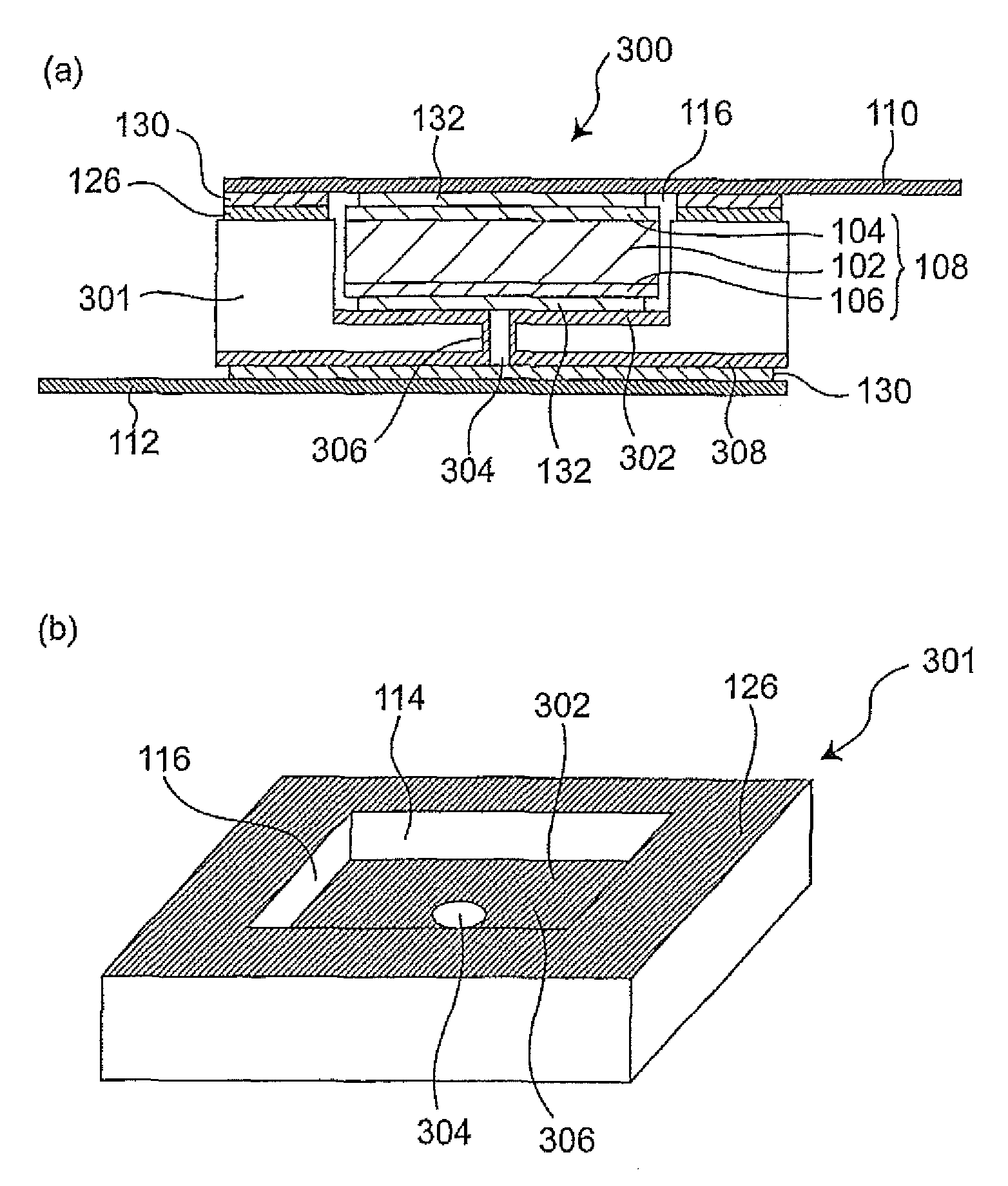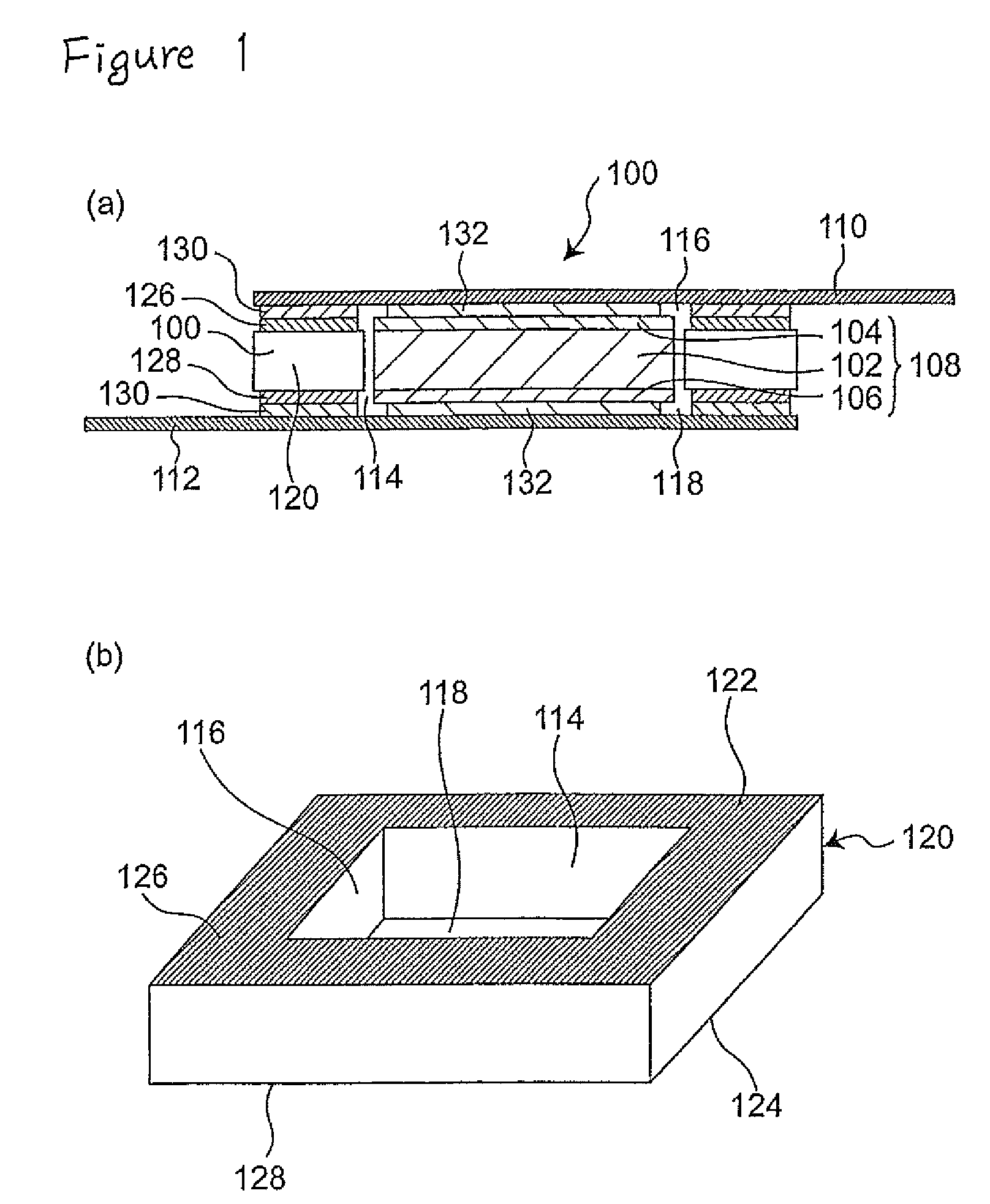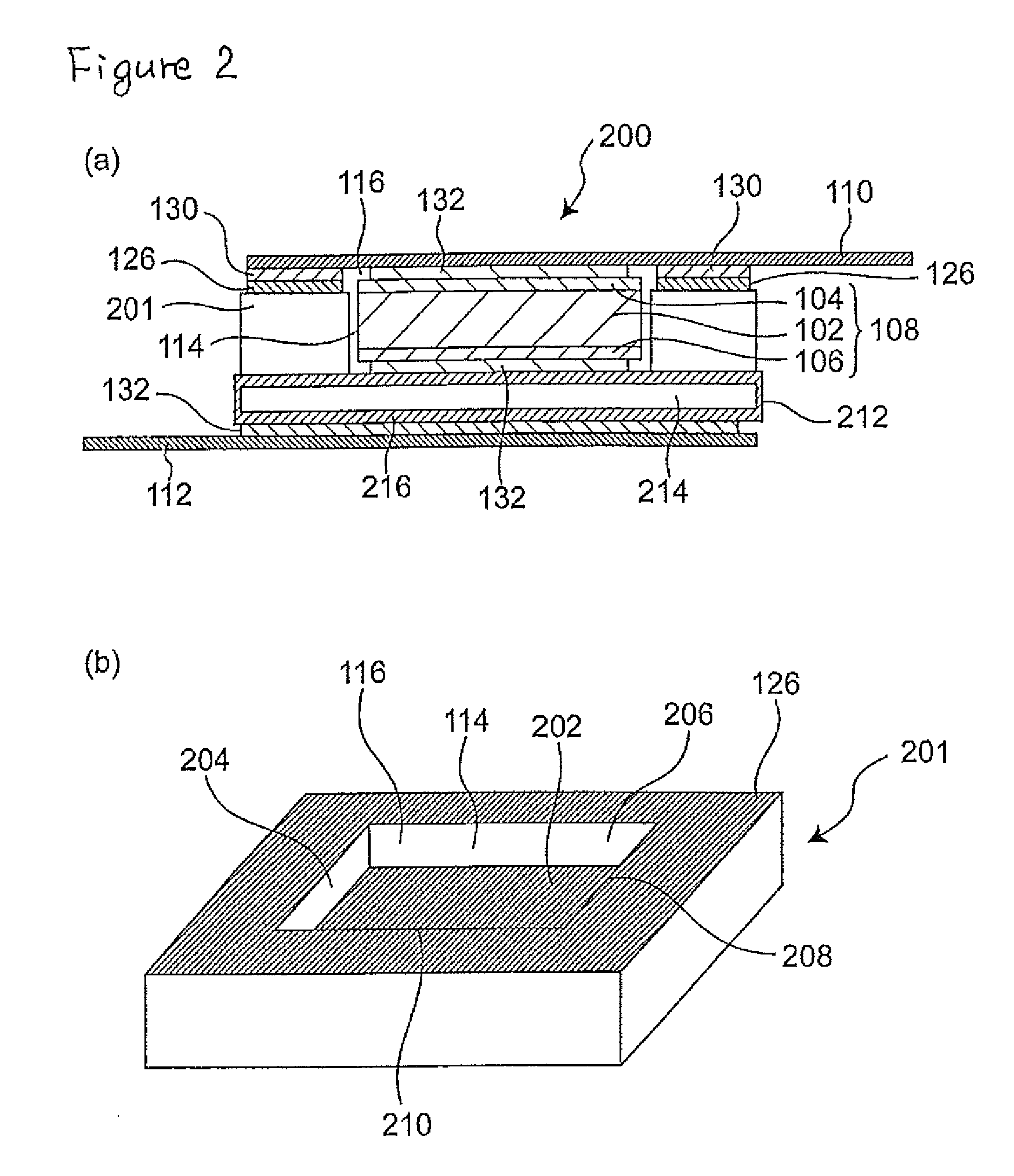PTC device
a positive temperature coefficient and ptc technology, applied in the direction of positive temperature coefficient thermistors, resistors, emergency protective circuit arrangements, etc., can solve the problems of increased resistance in ptc components, insufficient cases, and metal filler oxidation, so as to improve the yield the design constraints of ptc devices or ptc components are eased, and the dimensional precision of ptc devices is improved
- Summary
- Abstract
- Description
- Claims
- Application Information
AI Technical Summary
Benefits of technology
Problems solved by technology
Method used
Image
Examples
examples
[0070]The PTC device of the present invention shown in FIG. 4 was simulated using the following ceramic package, PTC component, and lead:
[0071]Ceramic package (manufactured by NGK Spark Plug Co., Ltd., made of aluminum oxide)
[0072]Size (outer dimensions): 4.8 mm×9.1 mm×1.3 mm (height)
[0073]Size of open-ended space: 3.4 mm×7.7 mm×1.05 mm (height)
[0074]Metal layer: Ni plating and then Au plating on Mo / Mn layer (corresponding to 404 and 406 in FIG. 4); Plated layer corresponds to 409 in FIG. 4.
[0075]PTC component (manufactured by Tyco Electronics Raychem, product name: PolySwitch)
[0076]Size: 2.3 mm×3.0 mm×0.43 mm (thickness)
[0077]Lead (made of nickel, size: 5 mm×20 mm×0.125 mm (thickness))
[0078]After disposing the PTC component within the open-ended space in the ceramic package, a lead was placed on the ceramic package, the opening defining said space was closed by welding the lead and the metal layer (406+409) on the periphery of the ceramic package to encapsulate the PTC component in...
PUM
| Property | Measurement | Unit |
|---|---|---|
| resistance | aaaaa | aaaaa |
| Temperature Coefficient | aaaaa | aaaaa |
| conductive | aaaaa | aaaaa |
Abstract
Description
Claims
Application Information
 Login to View More
Login to View More - R&D
- Intellectual Property
- Life Sciences
- Materials
- Tech Scout
- Unparalleled Data Quality
- Higher Quality Content
- 60% Fewer Hallucinations
Browse by: Latest US Patents, China's latest patents, Technical Efficacy Thesaurus, Application Domain, Technology Topic, Popular Technical Reports.
© 2025 PatSnap. All rights reserved.Legal|Privacy policy|Modern Slavery Act Transparency Statement|Sitemap|About US| Contact US: help@patsnap.com



